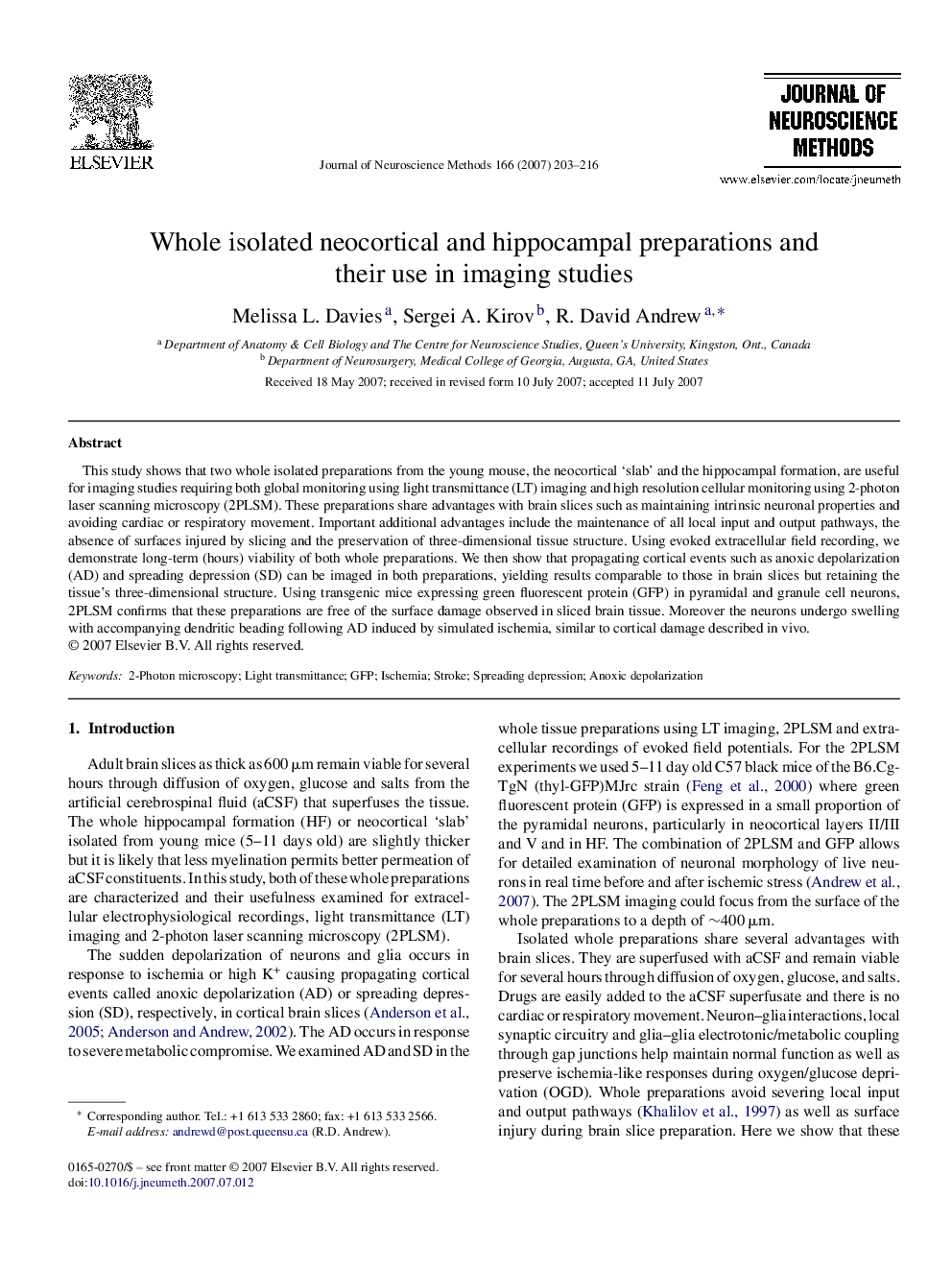| Article ID | Journal | Published Year | Pages | File Type |
|---|---|---|---|---|
| 4336531 | Journal of Neuroscience Methods | 2007 | 14 Pages |
This study shows that two whole isolated preparations from the young mouse, the neocortical ‘slab’ and the hippocampal formation, are useful for imaging studies requiring both global monitoring using light transmittance (LT) imaging and high resolution cellular monitoring using 2-photon laser scanning microscopy (2PLSM). These preparations share advantages with brain slices such as maintaining intrinsic neuronal properties and avoiding cardiac or respiratory movement. Important additional advantages include the maintenance of all local input and output pathways, the absence of surfaces injured by slicing and the preservation of three-dimensional tissue structure. Using evoked extracellular field recording, we demonstrate long-term (hours) viability of both whole preparations. We then show that propagating cortical events such as anoxic depolarization (AD) and spreading depression (SD) can be imaged in both preparations, yielding results comparable to those in brain slices but retaining the tissue's three-dimensional structure. Using transgenic mice expressing green fluorescent protein (GFP) in pyramidal and granule cell neurons, 2PLSM confirms that these preparations are free of the surface damage observed in sliced brain tissue. Moreover the neurons undergo swelling with accompanying dendritic beading following AD induced by simulated ischemia, similar to cortical damage described in vivo.
